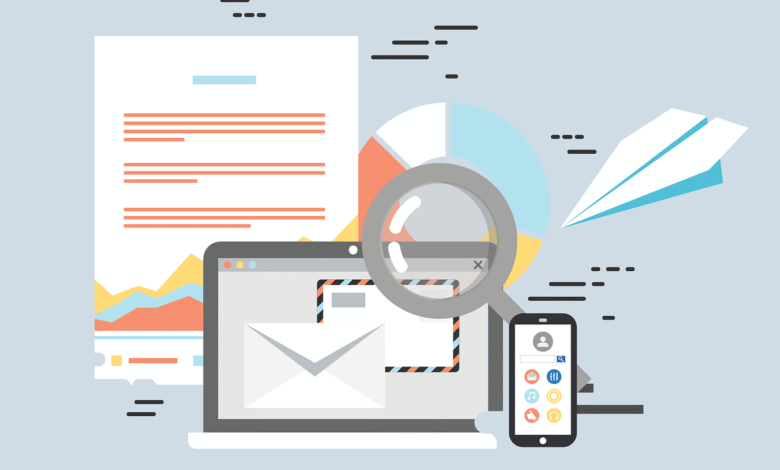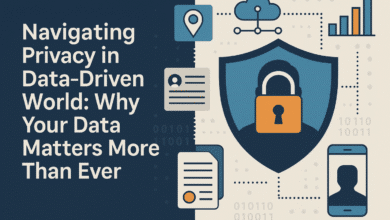Master Email Marketing: Proven Tips for Effective List Building and Campaign Success

Email marketing is one of the most powerful tools in any business’s digital marketing arsenal. When executed well, it allows businesses to connect directly with their audience, build relationships, and drive revenue. However, like any marketing strategy, success lies in the details. A great email marketing campaign starts with a high-quality email list, and the key to achieving consistent results is mastering the art of list building and running highly effective campaigns.
In this post, we’ll explore proven tips for effective email list building and campaign success, providing you with actionable strategies to help you master email marketing and achieve your business goals.
Why Email Marketing? Understanding Its Power
Before diving into strategies, it’s essential to understand why email marketing is such a powerhouse. The reason it continues to perform well is that it offers direct communication with your audience. Here’s why it works:
- Direct Access: With email, you can speak to your audience where they spend a significant amount of time: their inbox. This is more personal and direct than social media or other digital marketing channels.
- High Return on Investment (ROI): According to recent studies, email marketing boasts one of the highest ROIs in the industry. For every dollar spent, businesses can expect an average return of $42.
- Measurable Success: Email marketing allows for precise tracking. Metrics such as open rates, click-through rates (CTR), and conversion rates enable you to measure success and optimize campaigns for better performance.
Start with Building a High-Quality Email List
Before you can launch effective campaigns, you need to have a solid email list. The quality of your list will directly impact the success of your email marketing efforts. Here are some tried-and-true strategies to help you build a high-quality email list:
- Offer Valuable Lead Magnets: Lead magnets are free incentives that attract subscribers. Think eBooks, free reports, checklists, or templates that address your audience’s pain points. By offering something of value in exchange for their email addresses, you encourage more people to join your list.
- Use Multiple Opt-In Forms: The more opportunities people have to subscribe, the better. Place sign-up forms throughout your website—on your homepage, blog posts, sidebar, and landing pages. Consider adding exit-intent popups or time-delayed popups to capture visitors’ attention before they leave your site.
- Leverage Social Media: Use your social media platforms to drive people to your email list. Promote your lead magnets, and create posts encouraging followers to subscribe. You can also run contests or giveaways, with the entry requirement being an email subscription.
- Simplify the Sign-Up Process: The simpler and quicker you make the subscription process, the more likely people will sign up. Avoid lengthy forms, and ask for only essential information like an email address and first name.
- Use Referral Programs: Encourage your existing subscribers to share your emails with their networks. Consider offering rewards, discounts, or exclusive content as incentives for referrals.
Segment Your List for Maximum Relevance
Once you have a robust email list, it’s time to segment your audience. Segmentation ensures that your emails are targeted, relevant, and timely, which leads to better engagement and conversions. Some popular segmentation strategies include:
- Demographics: Segment based on age, gender, location, and other demographic factors. This allows you to tailor your messaging accordingly.
- Behavioral Data: Segment based on user actions. For example, you might have one list for people who purchased from you, and another for people who abandoned their carts. Behavior-based segmentation allows you to send highly relevant messages to each group.
- Engagement Levels: Create different segments for highly engaged subscribers versus less engaged ones. For those who engage frequently, send special offers or exclusive content. For those who haven’t interacted recently, send re-engagement campaigns to bring them back.
By tailoring your campaigns to different audience segments, you improve the likelihood of converting leads into customers.
Craft Emails That Deliver Value and Drive Action
The content of your emails plays a significant role in the effectiveness of your campaigns. To boost engagement and conversions, follow these tips when crafting your emails:
- Write Compelling Subject Lines: Your subject line is the first thing subscribers see, so make it catchy and intriguing. Keep it short (under 50 characters) and make sure it accurately reflects the email content. A/B test subject lines to see which ones resonate most with your audience.
- Provide Clear and Engaging Content: Once your subscribers open your email, you need content that delivers value. Offer helpful information, exclusive offers, or content that educates or entertains your audience. Keep your language simple and clear, and ensure the tone aligns with your brand.
- Include a Strong Call to Action (CTA): Every email should have one primary goal—whether it’s making a purchase, reading a blog post, or registering for a webinar. Make your CTA stand out, using action-oriented language. Ensure it’s easy to follow and leads the reader to the next step.
- Optimize for Mobile Devices: A significant portion of emails is read on mobile devices. Ensure that your emails are mobile-responsive, meaning they adjust to different screen sizes and look great on smartphones and tablets.
- Use Visuals Wisely: Incorporate images or graphics that complement your email content. However, don’t overdo it—too many images can slow down load times or trigger spam filters. Balance is key.
Automate for Efficiency and Personalization
One of the biggest advantages of email marketing is automation. With the right tools, you can send timely, relevant messages without lifting a finger. Here are a few ways to automate your campaigns:
- Welcome Series: Automatically send a welcome email (or series of emails) to new subscribers. This series should introduce your brand, highlight your most popular products or content, and offer an incentive to encourage engagement.
- Abandoned Cart Emails: If someone adds items to their cart but doesn’t complete the purchase, an automated abandoned cart email can encourage them to return and finalize their purchase. Consider offering a discount or a reminder of the items they left behind.
- Birthday/Anniversary Emails: Automate emails that celebrate special occasions such as birthdays or anniversaries. These emails can include personalized offers or discounts, making your subscribers feel valued.
- Re-engagement Campaigns: Use automation to re-engage subscribers who have become inactive. Send them a series of emails offering discounts, exclusive content, or asking for feedback to rekindle their interest.
Track, Analyze, and Optimize for Continuous Growth
To ensure the long-term success of your email campaigns, it’s essential to monitor and measure performance. Pay attention to key metrics such as:
- Open Rates: Track the percentage of subscribers who open your emails. Low open rates may indicate that your subject lines need improvement.
- Click-Through Rates (CTR): Measure how many people click on the links or buttons within your email. A low CTR could suggest that your content isn’t resonating with your audience or that your CTA needs more clarity.
- Conversion Rates: Monitor how many recipients take the desired action, such as making a purchase or filling out a form. A low conversion rate may indicate that your email content or offer isn’t compelling enough.
- Unsubscribe Rates: Keep an eye on the number of unsubscribes. A high unsubscribe rate can signal that you’re sending too many emails, irrelevant content, or that your email frequency needs adjustment.
Based on these metrics, continuously optimize your campaigns by testing different subject lines, content, CTAs, and sending times to see what works best.
Avoid Common Mistakes
Even experienced marketers can make mistakes. Here are some common email marketing pitfalls to avoid:
- Sending Too Many Emails: Bombarding your subscribers with too many emails can lead to unsubscribes. Find the right balance in frequency.
- Ignoring Mobile Optimization: A significant number of emails are opened on mobile devices. Ensure your emails are responsive and look great on all screen sizes.
- Neglecting Privacy Regulations: Always adhere to privacy laws like GDPR or CAN-SPAM. Ensure you get explicit consent before adding anyone to your list, and make it easy for them to unsubscribe.
Conclusion: Unlocking the Full Potential of Email Marketing
Email marketing is one of the most powerful ways to reach and engage with your audience. By building a high-quality email list, segmenting your subscribers, crafting valuable content, automating your campaigns, and constantly analyzing performance, you can master email marketing and achieve long-term business success.
At Autonomail, we are committed to helping you navigate the world of email marketing and create successful campaigns. Start implementing these strategies today to see the results of a well-executed email marketing plan that grows your list and boosts your business.




